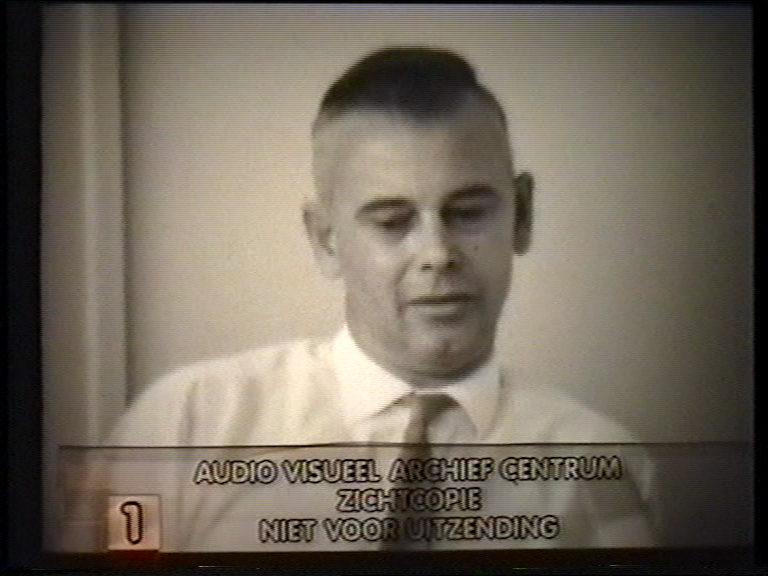

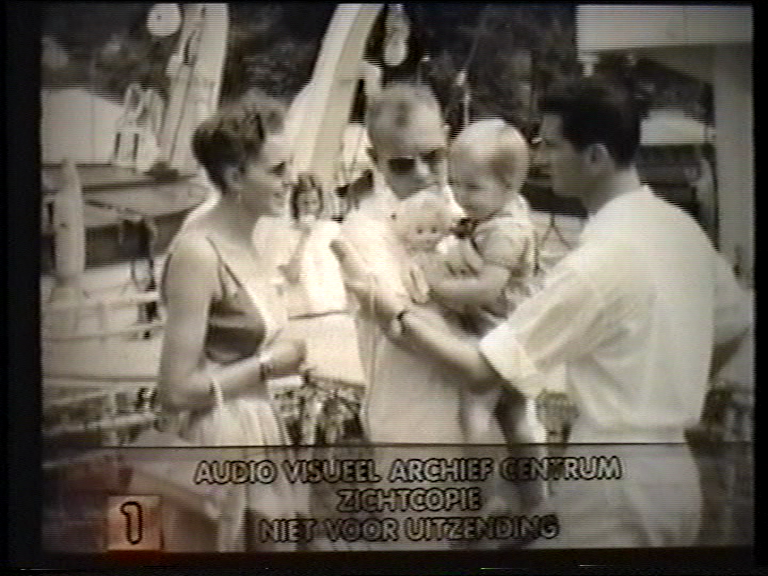

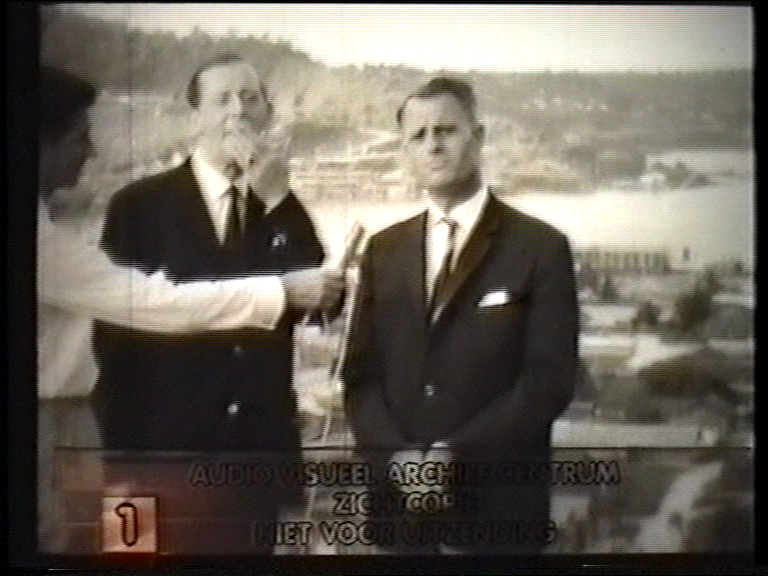

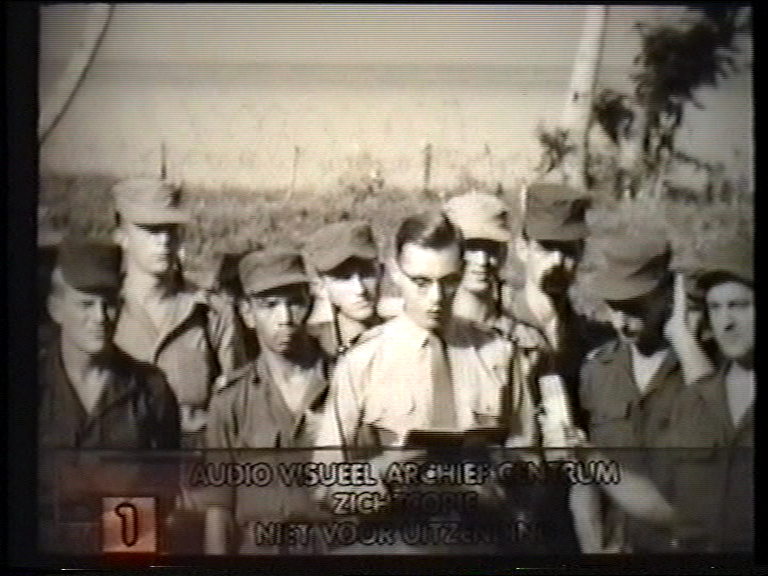



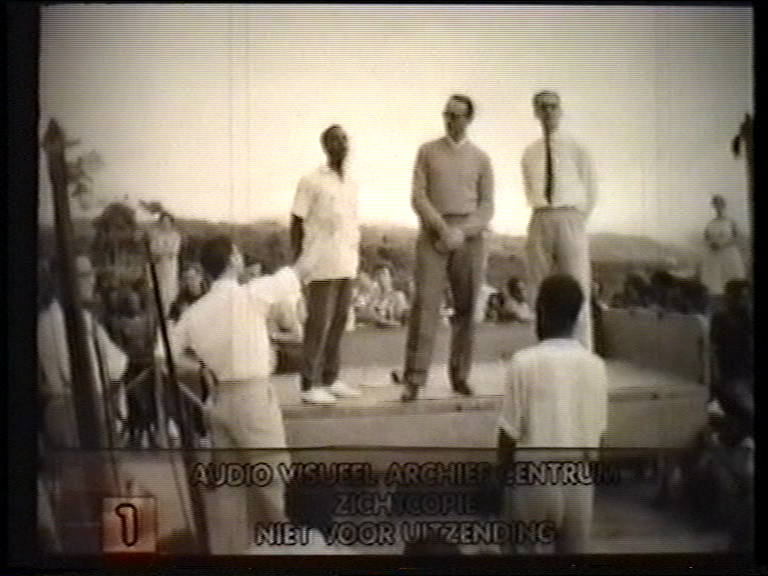

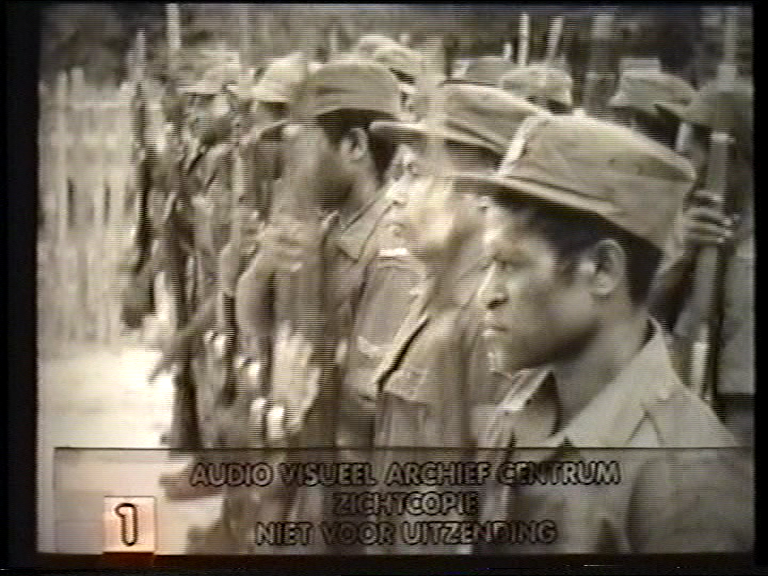

From Stone Age to Atom Age
Objectcode
FI/1200/28
Educational film about living conditions and customs of Papua tribes in Dutch New Guinea. Ways of life of coastal Papuans and mountain Papuans who sustain themselves in a family or small tribal context, by fishing at sea or in the marshes, the primitive cultivation of yams and sweet potatoes and the preparation of sago from sago palms. Pictures of the bellicose Asmat people sailing in war canoes in southern New Guinea and the land-bound Mimika tribe. Construction of a road through the jungle and the construction of houses and a school. Aerial view of the impenetrable jungle reaching all the way to the seashore and of small villages further inland. Performance of Papuans, trained for those purposes, in various governing boards, and in infant care. Images of a lake settlement, of religious practices and of large and small scale business in the timber industry and ship repair, also the manufacture of clothing, rattan furniture and sago cakes. Futhermore, training at the Dutch-Australian maritime school in Hollandia and the training of the Papua police, the health care service, cultivation of export products such as coffee, cocoa and tropical fruit, also livestock breeding and recreation in the form of football and hiking. In between, footage of the New Guinea Council and a discussion about the future independence of the area.
Contents
First part: 00.00 tt: NET National Educational Television presents SHOTS: introduction shots of painted Asmat people in long war canoes and running with spears and bows and arrows along the beach, Papua families sailing in boats, air and ground shots of villages with stilt houses along the coast, women fishing from canoes with hand nets, vegetable garden protected from animals by a palisade, construction of houses, families sailing through marsh, "civilized" families seated on the floor, their hands kneading sago, harvest festival, session of the New Guinea Council, where member Mark Kaisiepo addresses Papua members as the movie title is projected on the image. Dutch interpreter translates speech in Dutch for Dutch Council members. 05:17 Geographic location and layout of the whole of New Guinea (note 1) using maps, followed by aerial shots of the mountainous jungle reaching down to the shore, headlands, bays, estuaries and villages in the valleys behind the mountain ridges. Forested wetlands and white marsh birds flying low over the water. Woman fishing from a canoe with a hand net on Wissel Lake. Woman plowing the ground with a stick while her son collects the dug yams. (note 2). Market where fish, red peppers and other foods are displayed. 09:59 Annual Market at Sentani where visitors, among them Dutch, see how indigenous Papuans offer souvenirs, such as flute, shields, rug, a stand with arrows, and a paddle. Manufacture and processing of wood carvings, sometimes depicting ancestors. Naked men of the warrior Asmat tribe make canoes from tree trunks hollowed out with stone axes. Painted canoes with wood carvings and figureheads. Solo Dance of women turning into a mass dance of men and women, painted and wearing headdresses, accompanied by drum orchestra under a shelter. Harvest Dance of the Marind tribe from southern New Guinea. 16:33 Family of the Mimika tribe sailing a small boat on a river, carrying a fire, on land they cut sago palm, which is minced to a pulp that is washed and sieved on the river with river water. Joint construction of a dam wall for a fishing domain on the edge of a mangrove forest, after which fish are caught with large round nets. Fishing with lines weighted with stones, fishing with spears. A Pygmy family making a fire using a rope, then eating a meal of roasted yams. 24:10 Meeting of Regional Council of Biak, chaired by a Dutchman, fluently speaking Malay. Staking out an area for agricultural land in the jungle by Papua surveyors, and a caterpillar tractor pushing down wood stock while the population clear the ground of rocks and carry pre-fab roofing segments. Cement kiln operated By Papuans. Digging a culvert in a road through the jungle. 27:15 Construction of a multi-functional community building at the Marind tribe in southern New Guinea, where the floor is made of mud blocks. Boys play in the mud of a river in the north. 28:23 Part two: 00.00 arithmetic lesson in a classroom of an elementary school. Students in a class of secondary education (note 1). 00.51 Infant care in an indigenous clinic, where mothers collect recipes and are informed about baby-care. 01:39 Village of stilt houses built on a muddy riverbank, where children walk on gangways built on stilts, canoes are moored and a woman looks at her "garden", being a plant in a drum. 03:00 Churches of mission and the interiors of mosques where religious services are held (note 2). 04:11 Session of the New Guinea Council in which a member unfolds an economic plan for growing export crops. 04:52 Stilt house near Wissel Lake where skulls are part of the interior and serve as pillow for a sleeping man. Field is processed by cultivator drawn by small caterpillar tractor. Activity at the yard of a sawmill, where logs of ironwood and lumber packages for export are transported. Shipyard "Van Konijnenburg" in Manokwari, where Papuans are trained during repair work and operate machines in the engineering works. (note 3). 07:52 Home industry in the form of basket weaving and the manufacture of rattan furniture. Training of women making clothes using sewing machines, others who exercise bathing a baby using a doll and others who make sago cakes (note 4). 10:20 Large communal meal, prepared by families in the Mimika tribe, and then given to other families for services rendered (note 5). Similar meal of roast pork, corn, fruit and vegetables in the Marind tribe during a thanksgiving festival. 3:31 Meeting of the New Guinea Council, in which a Dutch interpreter in glass box translates the speech in local language by a member into Dutch for the Dutch members. 14:18 Schoolchildren in running contest during the break. Theoretical technical education in Dutch for young Papuans in one of the six technical schools, after which the newly learned information is put to practice as machine fitter, carpenter and bricklayer. Discussion about independence by a group of educated men and women. Joint Dutch-Australian Maritime Academy in Hollandia, where boys from both territories are trained in English for coastal navigation. Police training school where recruits drill, take the obstacle course and receive instruction in traffic regulation. Police officer operates stop sign at intersection. 18:03 Kiosk bookstore, adorned with wooden sculptures of ancestral images, where visitors hand over banknotes to clerk. Training of laboratory technicians working with microscopes. Hospital brother takes X-rays of male patients. Operation team comprising Dutch surgeons and surgical nurse and Papua assistants. 18:58 Harvesting of tropical agricultural products such as coconuts, coffee, cocoa, passion fruit and nuts, the future farmers are instructed by Dutch farmers in Malay and take care of spraying and plowing. Pilot farm where Papua cowboy drives together into the corral the Brahma cattle imported from Java and Papua employee recoils from the cow attacking him. 21:38 The official Papua orchestra plays a popular melody on wind instruments made of bamboo. 23:05 Football match between Papua New Guinea Members of the Council and Dutch officials, attended by a mixed audience (note 6). Conversation about the future form of government between Dutchman and Papuan, who questions in Malay and is answered in English , while another young man listens. Illustrative images of a town quarter on the coast, a house on stilts, an open air archtecture lesson using a scale model. 25:03 Discussion about the future direction on the terrace of the family of representative Nicholaas Jouwe (sitting on the wall). Young man (see previous section) says to be responsible as a student for the future of his country, believes that independence can be realised in 10 years and he is asking for the assistance of the Netherlands. Illustrative shots of walking march, the arrival of members in the building of the New Guinea Council and walking groups. 28.23 END. (Source: www.beeldengeluid.nl)
Title
Stenen tijdperk naar het atoomtijdperk, Van het
Year
1962
Technical detail
Color
Spoken comment
English
References
Links
http://www.beeldengeluid.nl